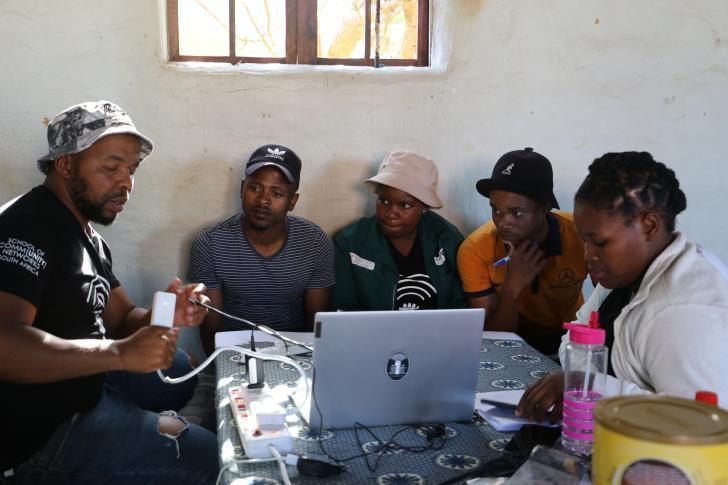
By providing internet access to unconnected and underserved populations, community centred connectivity initiatives (CCCIs) are critical actors in bridging the digital divide. As social enterprises or the social mission-driven segment of internet service providers (ISPs) in the digital industry, CCCIs have shown their responsiveness and effectiveness in enabling the poor and marginalised to have meaningful connectivity. However, studies to measure their social impact and cost-effectiveness have been inadequate. It is in response to this that the Institute for Social Entrepreneurship in Asia (ISEA), in partnership with the Association for Progressive Communications (APC) and Internet Society (ISOC), embarked on a case study research among what may be considered as significant practices among CCCIs in Asia and Africa.
The study’s objective was to articulate the social impact of CCCIs using development indexing (DI) as tool and their cost-effectiveness, aided by the methodology of social return on investment (SROI). DI assists in quantifying social impacts where simple proxy measures are deemed inadequate. SROI is a measure of cost-effectiveness, being a ratio of financial and social outcomes over inputs and costs.
Two of the four CCCIs studied are in remote, rural, Indigenous communities in Asia: one in a Sundanese village in Kasepuhan Ciptagelar in West Java, Indonesia (Kasepuhan Ciptagelar CCCI); and the other the Warli tribe in Pathardi, Maharshtra, Western India (Pathardi CCCI). The remaining two CCCIs are located in Africa: one the TandaNET CCCI, which operates in an urban slum area in Kibera, Nairobi, Kenya; and the other the Zenzeleni CCCI, which serves rural communities in Mankosi and Zithulele villages, Eastern Cape, South Africa.
The case studies showed that CCCIs provide social inclusion services and transformational services that generate significant social impacts beyond what commercial ISPs can offer. Social inclusion services are oriented towards addressing digital exclusion or other factors behind the usage gap. All the CCCIs studied provided internet and capacity-building services to communities that were unserved or underserved by commercial ISPs, and they enabled effective access to social and economic services. Transformational services are oriented towards enabling the poor and excluded to have the capability to become actors of their own development. In all four CCCI cases, the marginalised communities were enabled to build their capability to govern and manage digital resources to positively impact their lives and their communities.
All the four cases reported social inclusion and transformational services-facilitated impacts that clearly demonstrate the value proposition for investing in CCCIs. They relate to the following key result areas (KRAs) where a significant scale and/or depth of impact was achieved in communities served:
- Increased levels and capacities for inclusive human development
- Improvement in the economic position and conditions of community stakeholders.
- More effective preservation of the cultural identity, heritage and integrity of the community.
- Increased levels and capacities for climate action and natural resource management.
- Empowerment of community to control, govern and manage internet and digital resources.
- Inclusion and empowerment of women as stakeholders in digital transformation.
Using the SROI methodology and protocols prescribed by Social Value International, the study found that all four CCCIs achieved SROI ratios above one over three years. The ratios ranged from 1.17 (Zenzeleni CCCI) to 1.50 (TandaNET CCCI) in the first year; from 1.62 (Kasepuhan Ciptagelar CCCI) to 3.25 (Pathardi CCCI) in the second year; and from 2.51 (Kasepuhan Ciptagelar CCCI) to 8.19 (Pathardi CCCI) in the third year. Only the Kasepuhan Ciptagelar CCCI had data for the fourth year, showing a ratio of 2.89.
Overall, the cases demonstrate that CCCIs are not only cost-effective interventions in bridging the digital divide but also significantly contribute to accelerating the achievement of many of the sustainable development goals (SDGs) as indicated by the multifaceted KRAs where significant impact in terms of depth and/or scale was observed.
The full report is available here.
And the reports of each of the four cases analysed in the frame of this research are also available here:
- Kasepuhan Ciptagelar CCCI, from Java, Indonesia.
- Pathardi CCCI, from Maharshtra, Western India.
- TandaNET CCCI, from Kibera, Nairobi, Kenya.
- Zenzeleni CCCI, from Mankosi and Zithulele villages, Eastern Cape, South Africa.